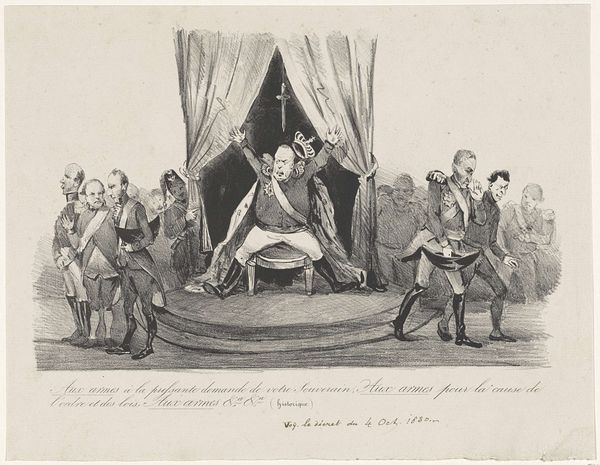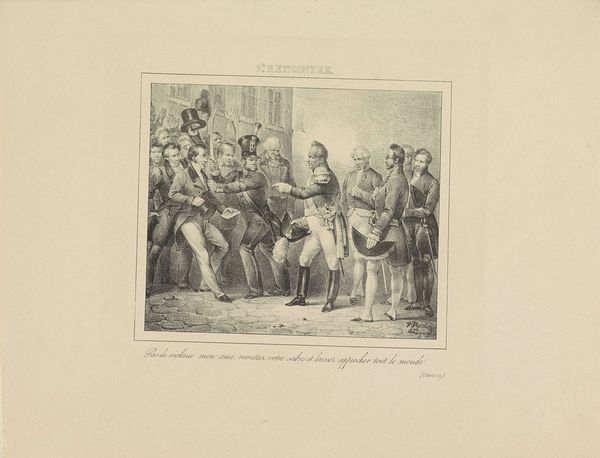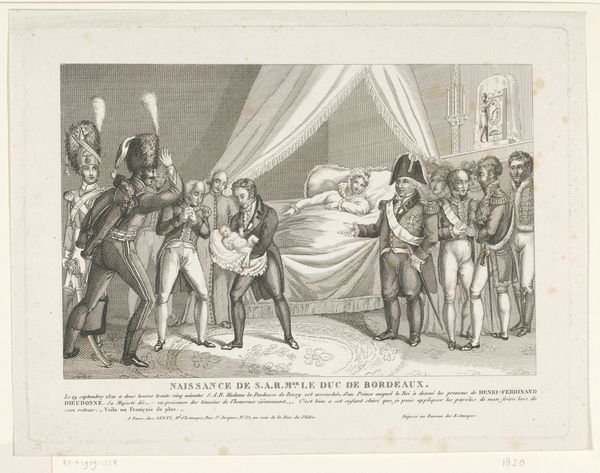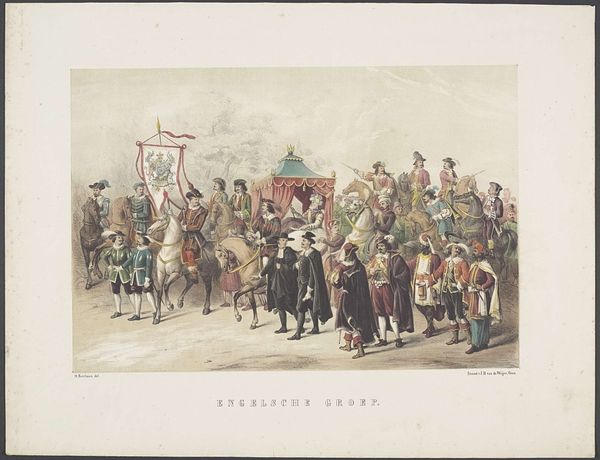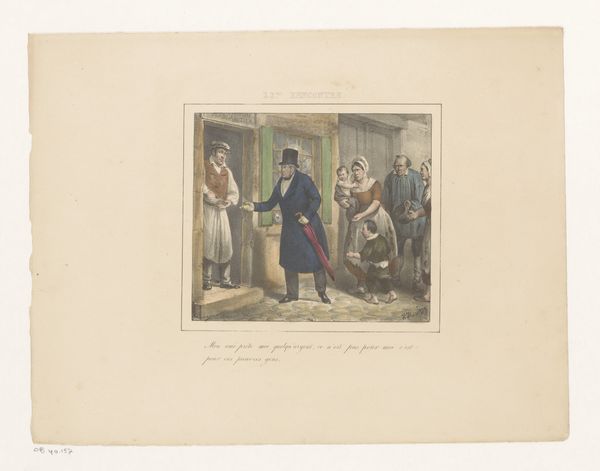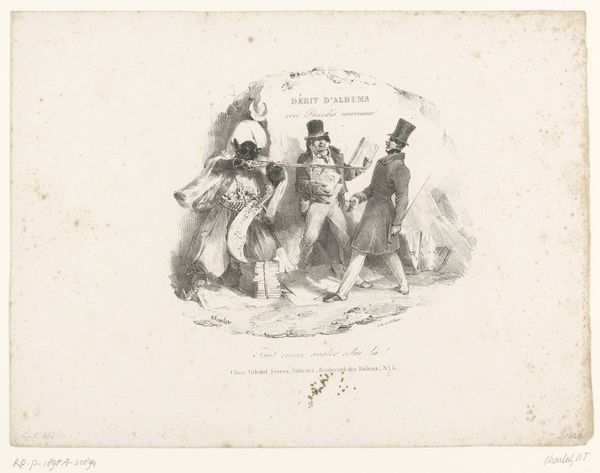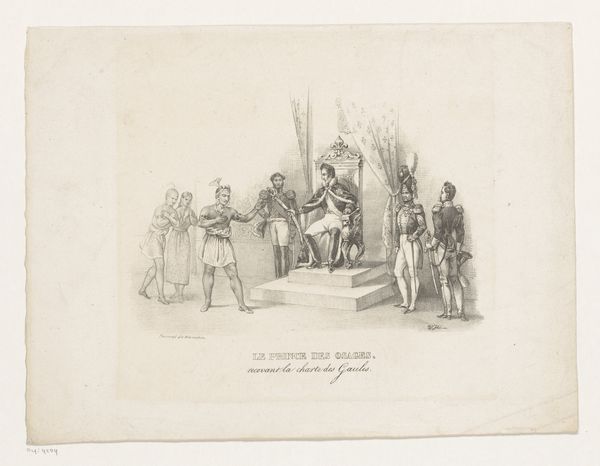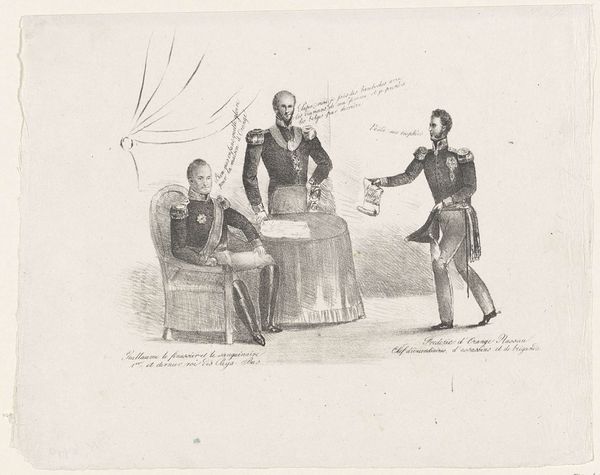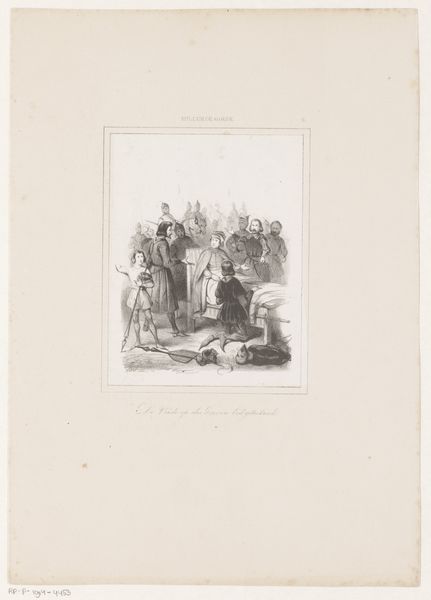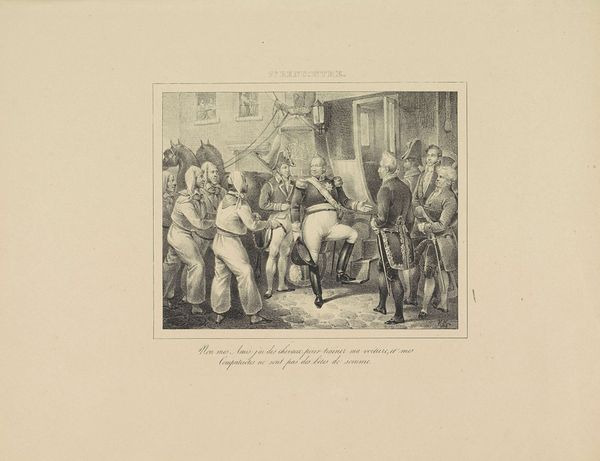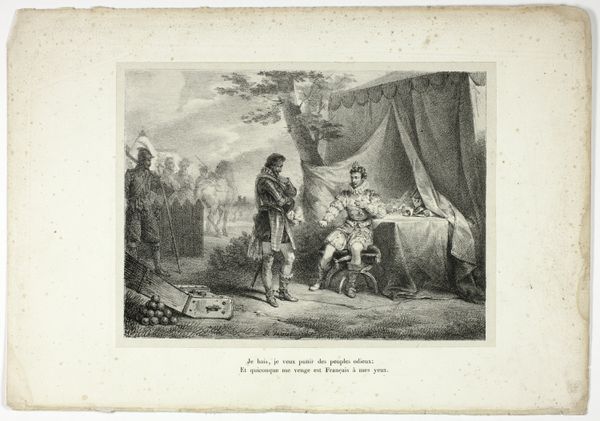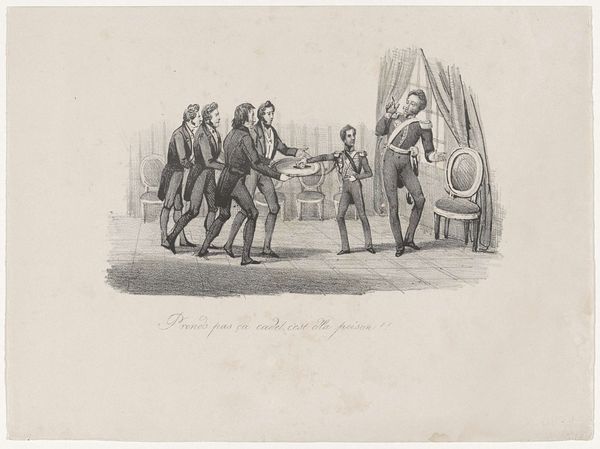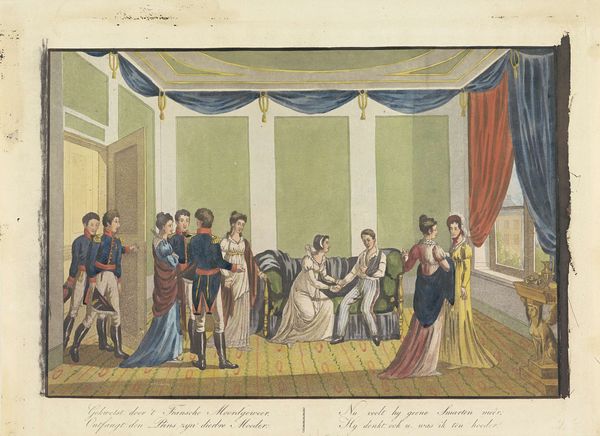
print, watercolor
#
portrait
#
imaginative character sketch
#
light pencil work
#
quirky sketch
# print
#
personal sketchbook
#
watercolor
#
romanticism
#
sketchbook drawing
#
watercolour illustration
#
history-painting
#
storyboard and sketchbook work
#
cartoon carciture
#
sketchbook art
#
watercolor
Dimensions: height 240 mm, width 317 mm
Copyright: Rijks Museum: Open Domain
Curator: This watercolour illustration from 1827 by Jean-Louis Van Hemelryck is titled "Audiënties van Willem I en Karel X," or "Audiences of William I and Charles X." Editor: My initial thought is, the paper looks quite thin. Given its age and likely use, seeing how the watercolor has stained the page makes me appreciate its fragility and function as a preserved object. Curator: Absolutely, the slight staining of the paper only adds to the romantic charm. What intrigues me is the division of space. On the left, we see what seems to be William I meeting someone, rendered with this open-handed gesture; and then to the right is Charles X upon a small throne, rather austere, surrounded by guards. Editor: I’m more struck by how quickly this image seems to have been made. Look at the light touches, almost rushed. There's something about the social function of the work itself as a possible political cartoon or commentary of its day through reproducible printing. Curator: I see your point about the brisk strokes. But it suggests also the speed of courtly life itself. It's all very much about conveying this moment, this...dance...between power and subject. The symbolic exchange implied in audiences such as this. There's also an intentional duality there; the one more relaxed, and the other rigidly structured. Editor: I'd guess these light, almost casual applications of pigment make the printing process relatively easy and cheap. Also, consider the implications around consuming an image such as this! The materials and methods here speak to larger trends in disseminating political messaging in the 19th century. Curator: Fascinating. So, while I am caught in the symbolism of leadership, the way the figures present themselves as representations of authority, you are focusing on the image's dissemination. Editor: Precisely! Both the intention of the artist and its material qualities. The quick washes of color and economical strokes seem to mirror, and possibly even enable the burgeoning speed of politics, trade, and technology during this historical period. Curator: It certainly gives me something more to think about beyond simply deciphering its symbolic codes. Editor: Exactly, the artist wasn’t working in a vacuum! Hopefully we’ve highlighted just a couple of things to think about when considering such imagery in connection to how it was consumed.
Comments
No comments
Be the first to comment and join the conversation on the ultimate creative platform.
